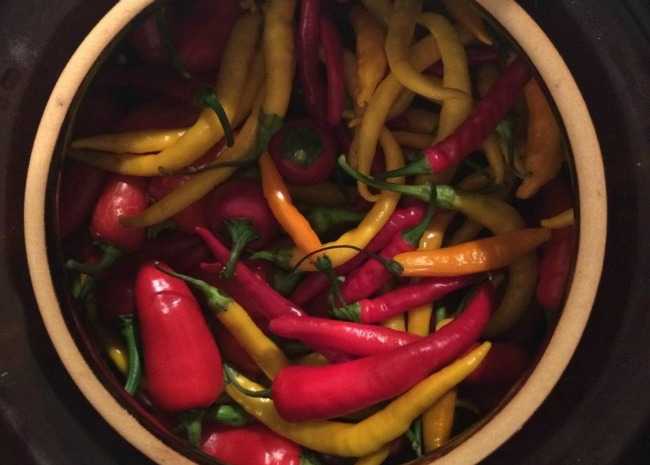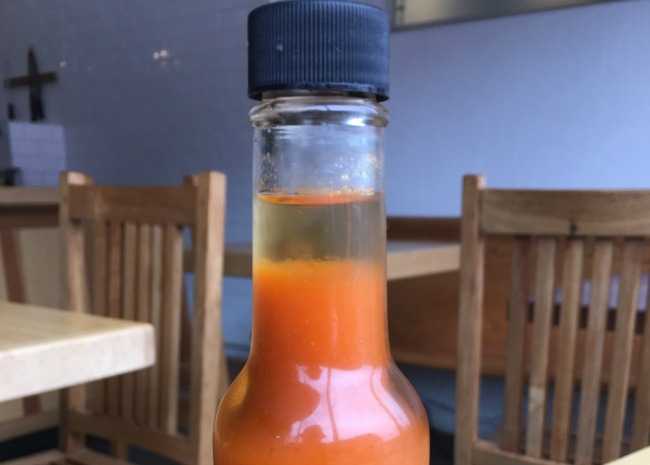
 1
1




... it´s about time to get a signature ...




 1
1




Don't let perfect be the enemy of good.
 2
2




A wide-mouthed one-gallon jar would work as well, although you’ll have to find weights that fit inside the mouth of the jar to keep the peppers submerged in the brine, as well as some sort of cover that you can burp occasionally
Fill a pitcher with spring, well, or filtered water. Be sure not to use treated water (the chlorine is harmful to the fermentation).
Use your crock’s weights to evenly press down the (almost) submerged peppers. After 24 hours, the peppers should be entirely submerged in brine. The salt and pressure from the weights breaks down their structure a little bit, and they kick out whatever water they were retaining, which adds to the quantity of brine.
I let my hot sauce ferment for one month in this environment at a warm room temperature. You can get a good result in shorter time, but we want a nice, acidic hot sauce, and the longer it ferments, the more sour it becomes. Check it weekly, skimming any white molds that grow on the surface of the brine with a ladle.
When it’s done, tie a bandana around your lower face, and wear eye protection (you don’t want this in your eyes) and pour carefully into a 5 gallon bucket. Use a Vitamix or immersion blender and thoroughly puree, then strain if you like. We reserve the dregs from straining, dehydrate, and grind them into delicious fermented chile powder.



Invasive plants are Earth's way of insisting we notice her medicines. Stephen Herrod Buhner
Everyone learns what works by learning what doesn't work. Stephen Herrod Buhner
 5
5




"The rule of no realm is mine. But all worthy things that are in peril as the world now stands, these are my care. And for my part, I shall not wholly fail in my task if anything that passes through this night can still grow fairer or bear fruit and flower again in days to come. For I too am a steward. Did you not know?" Gandolf




 1
1




Invasive plants are Earth's way of insisting we notice her medicines. Stephen Herrod Buhner
Everyone learns what works by learning what doesn't work. Stephen Herrod Buhner









Tom McGowan wrote:HI,
I recently fermented some ghost peppers with pinapple, onion and green pepper. My problem is this is my first time fermenting and I used the brine and weight but used a mason jar without an airlock. I had the lid on tight and fermented for about 4 weeks and when I opened the jar there was a lot of CO2 released. It looks fine and doesn't smell bad, is this ok to use?
Appreciate the insights...
"The rule of no realm is mine. But all worthy things that are in peril as the world now stands, these are my care. And for my part, I shall not wholly fail in my task if anything that passes through this night can still grow fairer or bear fruit and flower again in days to come. For I too am a steward. Did you not know?" Gandolf

|
I hired a bunch of ninjas. The fridge is empty, but I can't find them to tell them the mission.
The new gardening playing cards kickstarter is now live!
https://www.kickstarter.com/projects/paulwheaton/garden-cards
|





